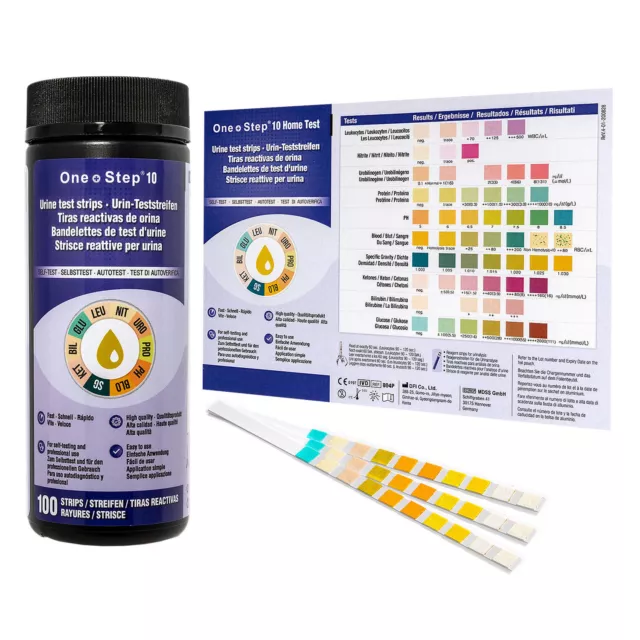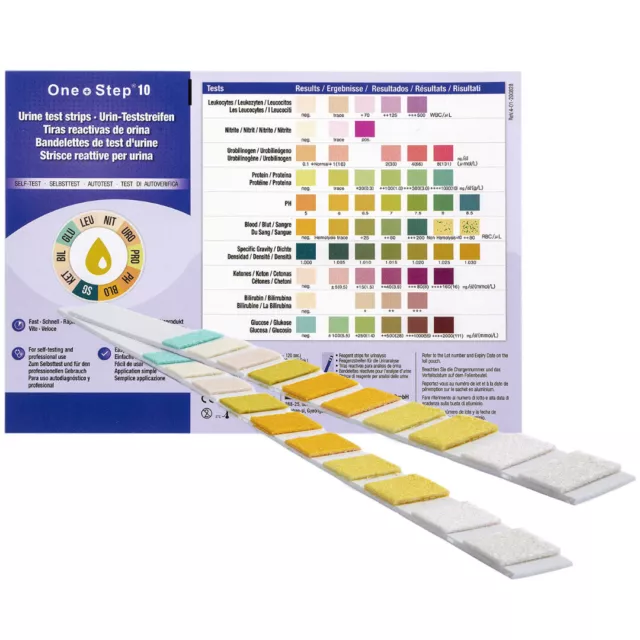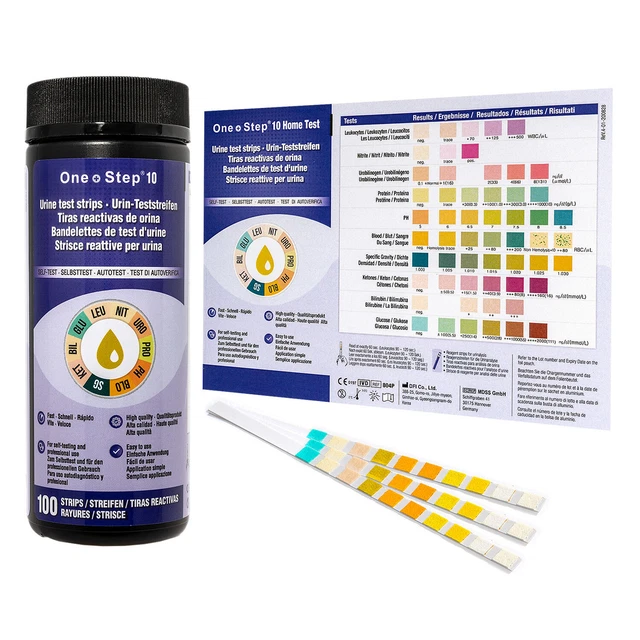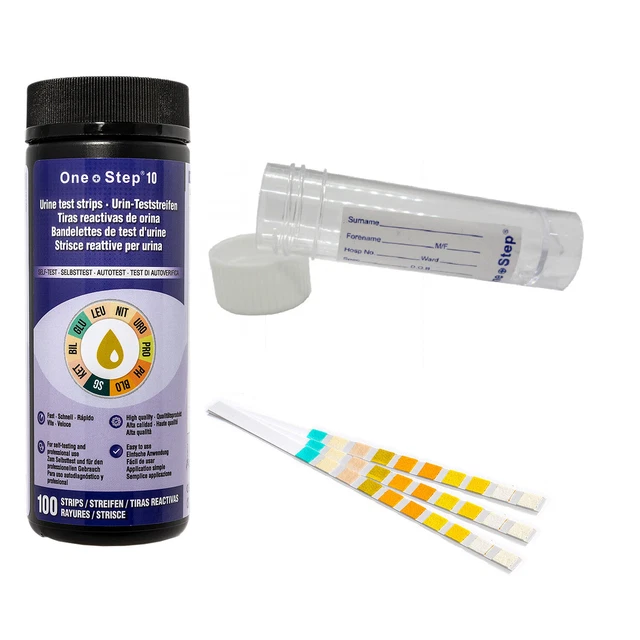|
Significance of Ketones in diet programs.
Is your
body burning fat cells? The presence of elevated levels of Ketones in
human urine is a primary indicator that the body is in ketosis. Ketosis
simply means that the body's stored fat cells are being utilized as a
primary fuel source to produce energy. The by products of fat metabolism
are Ketones. Ketones are not stored by the body and are eliminated as
detectable waste products in urine. Therefore, monitoring the level of
Ketones is presumptive of, and directly correlated to the metabolizing,
or burning of stored fat cells to produce energy. Likewise the
conclusion can be drawn that the higher the concentration of Ketones in
urine, the higher is the amount of fat cells metabolized by the body.
Ketone test strips are used routinely to help measure the progress of
dieters especially those maintaining a low carbohydrate diet.
Additionally, ketones are monitored in individuals with Type 1 diabetes.
In diabetics, high ketone levels indicate ketoacidosis, a complication
of inadequate insulin levels that can lead to diabetic coma. In overall
health considerations, high ketone levels are generally an indication of
abnormal nutritional conditions, including starvation, fasting,
anorexia, high protein or low carbohydrate diets.
SIGNIFICANCE OF DIAGNOSTIC REAGENT PANELS
Depending
on the test and specific reagent panel, abnormal levels of specific
chemical compounds contained in urine can be easily and readily
identified as potential risks factors to overall health and/or
indicators of underlying health problems.
Diagnostics Reagent Strips for Urinalysis are firm
plastic strips to which are affixed several separate
reagent areas.
The reagent test areas on Diagnostics Reagent
Strips are ready to use upon removal from the bottle and
the entire reagent strip is disposable. The strips may
be read visually, requiring no additional laboratory
equipment for testing.
The directions must be followed exactly. Accurate timing
is essential to provide optimal results. The reagent
strips must be kept in the bottle with the cap tightly
closed to maintain reagent reactivity. To obtain optimal
results, it is necessary to use fresh, well-mixed,
uncentrifuged urine.
Reagents: (Based on dry weight at the time of
impregnation)
Glucose: 1.7% w/w/ glucose oxidase (microbial, 123U);
0.2% w/w peroxidase (horseradish 203U); 0.1% w/w
potassium iodide
Ketone: 5.7% w/w sodium nitroprusside;
Blood: 26% w/w diisopropylbenzene dihydroperoxide; 1.5%
w/w tetramethylbenzidine;
pH: 3.3% w/w methyl red; 55% w/w bromthymol blue;
Protein: 0.1% w/w tetrabromphenol blue;
Indications
For In Vitro Diagnostic Use.
As with all laboratory tests, definitive diagnostic or
therapeutic decisions should not be based on any single
result or method.
Warnings
-
Store at
temperatures between 15°-30°C(59°-86°F) and out of
direct sunlight.
-
Replace cap
immediately and tightly.
-
Do not remove
desiccant form bottle.
-
Read enclosed
directions carefully.
-
Do not use
after expiration date.
-
Use only if
tamper evident seals on this carton are intact.
These are the diagnostic reagent strips used by
physicians, clinics and hospitals to initially screen
for suspected and/or existing health conditions. Simple
to use, urine diagnostic reagent strips can provide
early indications of developing health problems and
identify potential abnormal functions requiring more
extensive testing. Additionally, routine use is
frequently recommended by physicians for monitoring
certain existing and chronic health conditions.
Procedure and Use:
-
Collect a fresh urine sample in a clean, dry
container preferably glass. First morning samples
contain the highest concentration of target markers.
-
Remove
one reagent strip from the bottle and immediately
replace the container cap, minimizing the exposure
of the remaining test strips to light and air.
-
Completely immerse the reagent pads of the strip in
the urine sample and then remove immediately to
avoid dissolving out the reagent pads.
-
While
removing the reagent strip, run the edge of the
strip against the rim of the specimen container to
remove excess urine. Hold the strip in a horizontal
position to prevent possible cross contamination of
chemicals located in adjacent reagent pads.
-
Compare the colour change of reagent pads to the
corresponding colour chart on the bottle label. Read
results according to the chart's time frame for each
panel tested.
-
Record
the results of your readings for discussion and/or
evaluation with your physician or healthcare
provider and then discard the used reagent strip.
Reading
the results:
Each vial
of urinalysis reagent strips includes a colour coded
chart.
The
reactive colour of each panel on the test strip is
compared to the closest corresponding colour on the
result chart. The concentration level range for each
chemical marker is indicated below each colour block on
the result chart. As with all tests dealing with colour
intensity or colour matching, it is often recommended to
obtain another person's interpretation of the test
result. Shown to the left is the colour result chart for
the URS-11, ten parameter test strip. Each of the ten
reactive reagent pads on the test strip are compared to
the corresponding line of colour blocks on the chart.
The closest colour match indicates the test result. Use
of reagent strips are intended as an initial indication
only of elevated chemical markers and not conclusive of
a specific diagnosis. Further testing and consultation
with a healthcare professional is necessary to confirm
the presence of specific disease or health conditions.
Glucose:
Glucose should not be detected in normal urine. Small
amounts of glucose may be excreted by the kidney. These
amounts are usually below the sensitivity of this test
but on occasion may produce a colour between the
negative and the 1/10 g/dL colour blocks. Results of
1/10 g/dL (if consistent) or higher are considered to be
significantly abnormal and professional advice should be
obtained immediately.
• Protein: Protein is usually not detectable in normal
urine. A colour matching any block greater than "Trace"
indicates significant proteinuria. For urine of high
specific gravity, the test area may most closely match
the "Trace" colour block even though only normal
concentration of protein is present. Clinical judgment
and advice along with further tests would be required to
properly evaluate the significance of consistent "Trace"
readings.
• pH: Normal and abnormal urinary pH may range from 5 to
9. Readings are generally situation specific and should
be discussed with your healthcare professional.
Generally, certain conditions manifest in low or high
consistent pH readings and should be professionally
evaluated. First morning urine from healthy individuals
will usually range from 5 to 6.
• Expected results for Leucocytes, Nitrites, Ketone,
Bilirubin, Blood, Urobilinogen and Specific Gravity
(URS-Strip 11) including normal ranges are included in a
complete instruction and use sheet. In most cases, for
these additional test panels, you want to obtain a
normal, or negative result meaning that the reagent
panel does not change colour. A colour change in one or
more of the reagent panels normally indicates an
unexpected result. For example, a significant colour
change in the leukocyte panel would indicate an elevated
level of white blood cells indicating a possible
infection. A colour change, or abnormal reading in the
blood panel could indicate undiagnosed internal
bleeding.
|
 1 watcher
1 watcher Urine Test Strips 10 Parameter Diabetes, Ketone, UTI Infection, Liver, pH &more£22.29 Buy It Now
Urine Test Strips 10 Parameter Diabetes, Ketone, UTI Infection, Liver, pH &more£22.29 Buy It Now 9 watchers
9 watchers Urine Test Strips 10 Parameter Urinalysis Home Professional GP Multi Stick Tests£9.29 Buy It Now
Urine Test Strips 10 Parameter Urinalysis Home Professional GP Multi Stick Tests£9.29 Buy It Now 1,952 watchers
1,952 watchers 100 x Urine Test Strips 10 Parameter Urine Reagent Tests Diabetes, UTI, pH &More£9.69 Buy It Now
100 x Urine Test Strips 10 Parameter Urine Reagent Tests Diabetes, UTI, pH &More£9.69 Buy It Now 142 watchers
142 watchers 100 x Urine Test Strips 10 Parameter Urinalysis Multi Sticks + Sample Pot£9.79 Buy It Now
100 x Urine Test Strips 10 Parameter Urinalysis Multi Sticks + Sample Pot£9.79 Buy It Now 47 watchers
47 watchers 100 Urine Test Strips 10 PARAMETER Ketone Infection Liver pH Blood UTI Nitrite£7.89 Buy It Now
100 Urine Test Strips 10 PARAMETER Ketone Infection Liver pH Blood UTI Nitrite£7.89 Buy It Now

